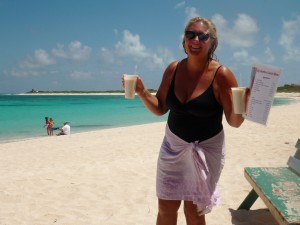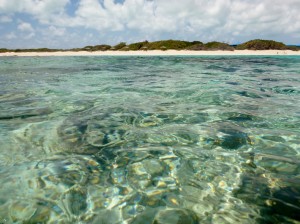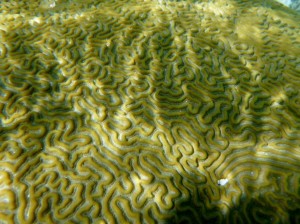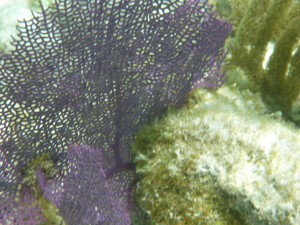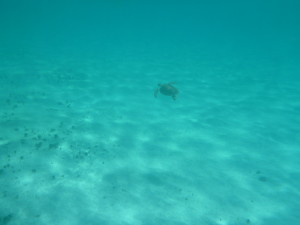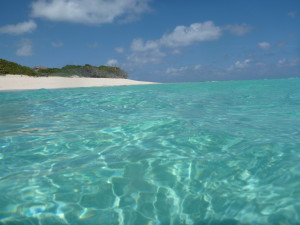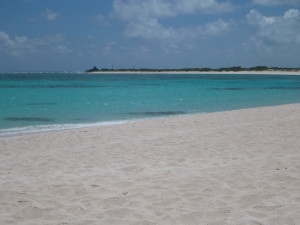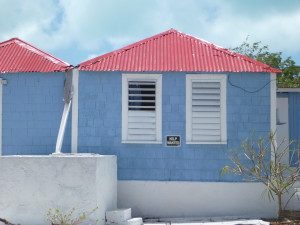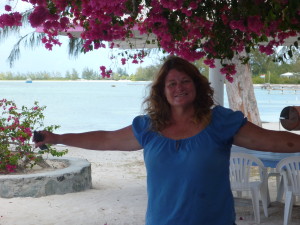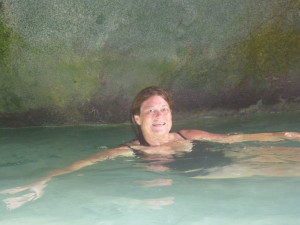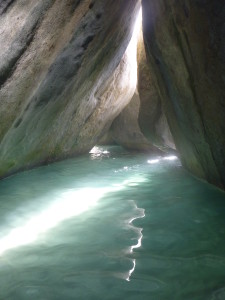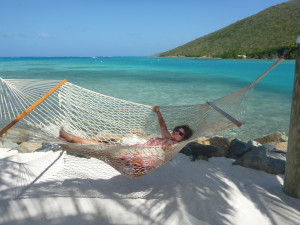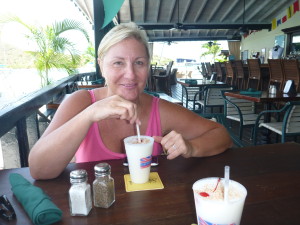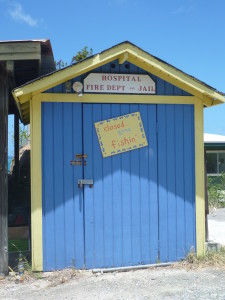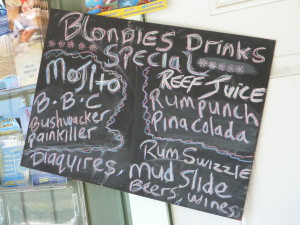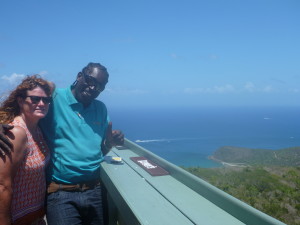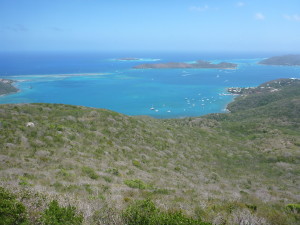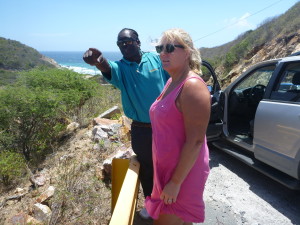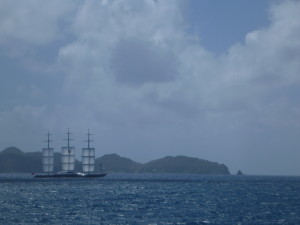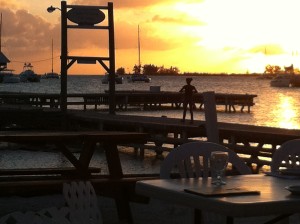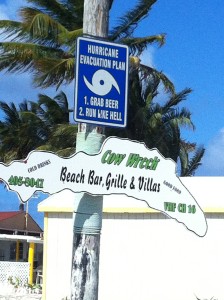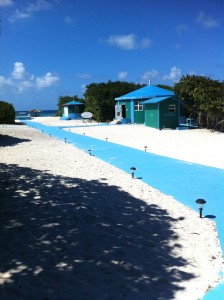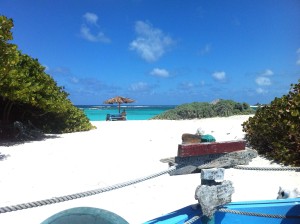When Jane and I decided to accept a tour of Virgin Gorda with “Elvis”, a tall large black man with long dreadlocks we should have realised we were in for a treat!
We were on our first day exploring the British Virgin Islands after the sailing regatta and had just caught a ferry from the capital of Tortola, Roadtown – a 30 minute trip.
Elvis drove us along the stunning coastline and up to the largest hill accessible by cars. There we had a view of the Caribbean side of the island with its crystal clear turquoise waters – which sounds like a cliché but it’s hard to describe otherwise. As a cruising yachtsman said to me, “you can look over the side and down 50 metres and tell whether the can of coke is a diet one or not. It’s that clear”.
Elvis points out to us Richard Branson’s two islands – Necker, which was bought for about 180,000 pounds in 1978, and his more recent and much more expensive acquisition of Moskito Island. Both islands seem to be a hive of development with rebuilding on Necker after a fire a few years ago and redevelopment at Moskito.
Elvis tells us that he plays in a band (Elvis White for those who want to google it), and that he regularly plays for Richard and his guests on Necker. He’s even been to England for one of Richard’s gigs there. Elvis plays the local music, “SOCA”, or Sounds of the Caribbean, which is a mix of reggae, blues, rock and pop island style. He tells us that Richard’s house is amazing and that he’s a really cool dude who does a lot for the locals, including supporting local businesses looking for a kick start.
A highlight of Virgin Gorda is taking the short ferry trip to Saba Rock, which is very close to Necker Island and opposite the wonderfully-named Bitter End Yacht Club. Here Jane and I have a delicious taco lunch gazing across the waters, supplemented with one of the most delicious Piña Coladas ever!
Before heading back to Tortola, we explore the famous baths where you can walk/swim/snorkel through caves created beneath huge granite boulders. Again the water is crystal clear and warm.
Day two we decide to dive the Wreck of the Rhone with Blue Water Divers. I’m always a little nervous before a dive especially of a shipwreck, but Rupert our dive master makes us feel very comfortable and safe. The 1865 steam ship, which was meant to be unsinkable, sunk with a large loss of life in 1867 during a Hurricane when it hit rock and reef near Salt Island.
Our first dive is of the bow of the ship, and we follow Rupert around, over, under and about. We see many large and small fish and two turtles. We check out one of the cannons.
Up top waiting for our second dive, he tells us some of the history of the sinking. His story is that the Captain Robert Woolley was drinking rum with the captain of another boat , the Conway, when the first mate warned of the hurricane, which was not typical of October. Eventually when things got really rough, the other boat loaded its passengers onto the unsinkable ship and headed for Tortola while the Rhone headed for open waters… but then things went very badly. Back in those days, passengers were strapped to their bunks so they wouldn’t fall on the deck. This meant many drowned and could not make it to nearby land when the Rhone sunk.
The second dive is of the stern of the boat which is in shallower water. Here we see large spotted eagle rays and swim into narrow gloomy ship spaces filled with fish. Rupert points out the Captain’s teaspoon – which looks rather like a rusty large dessert spoon which could have been anyone’s, but it’s a nice story.
Our last day, we wake early and make our way to Roadtown and catch the ferry to one of the more remote Virgin Islands, Anegada. Just over an hour later we arrive at the flat sand island, which is vastly different to most of the other hilly islands. Our first stop is the nearby hotel serving the yachties moored offshore. Here we have breakfast and rent a small jeep to drive around the Island.
Like many islands in the Caribbean the interior is tattered with litter, derelict cars and half built houses. But the edges are complete with pristine sand and warm aquamarine waters.
Jane and I are keen to see the famous Anegada iguanas and flamingos. We go to the iguana sanctuary, but unfortunately it’s locked. We drive to the inland salt lakes and see some birds, but they don’t look pink.
We resort instead to snorkelling and swimming the gorgeous beaches. We try again to see the iguanas when we head back to the ferry, but no luck. We think we glimpse flamingos in the distance across a salt lake, but can’t be sure.
At the end of the day, we discover the ferry has broken down and we have another hour or so to enjoy the island. We head back to the hotel and watch the sunset as we try a Caribbean cocktail called a “Bushwhacker”. I think it has every liqueur known to man mixed in it, but it’s surprisingly delicious and we feel very mellow about our late ferry and whether we’ll make our flights back home in the morning.
After all, it wouldn’t be so bad to be stranded on an isolated island in the Caribbean. (1956)
